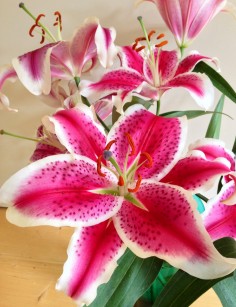 Recently I received a bouquet of Stargazer lilies. The spectacular flowers on each stem open in succession and the display will last for nearly two weeks if I take care of them changing the water regularly and re-cutting the stems.
Recently I received a bouquet of Stargazer lilies. The spectacular flowers on each stem open in succession and the display will last for nearly two weeks if I take care of them changing the water regularly and re-cutting the stems.
Wish the lilies in my own garden would hurry up and open. Mine are always a little behind those in warmer spots. When they do open later in the month they will scent the garden with an unforgettable fragrance. Some flowers are memorable for their beautiful color, some for the hummingbirds they attract and some have it all-vibrant hues, nectar and fragrance. I love them all. Perhaps you want to add a few new ones to your own garden. Try one of these.
Lilies are one of the easiest of bulbs to grow. Stargazers are the most stunning and perhaps the most celebrated of lily varieties. Curious about their origin I discovered a little intrigue among horticultural historians. Seems they don't like seeing history revised. The bottom line is this lily was not first bred in 1974 by Mr. Leslie Woodruff of California but rather by Robert Griesbach of Washington and named in his friends honor. When you have an established clump of Stargazer lilies it doesn't matter who first bred them.
The stems of the Stargazer can reach 3- 6 ft tall and have in excess of 40 flowers each when planted in full sun in loamy or sandy soil and the blooms will last for a month or so. You can still grow beautiful lilies in as little as 6 hours of sun per day so don't be discouraged if you don't have a spot that receives full sun all day long. The sunlight can even be accrued over the course of the day so if your garden get some morning sun then again later in the day it all adds up.
If you are looking for a fragrant vine other than pink jasmine I have two suggestions. The first is Evergreen 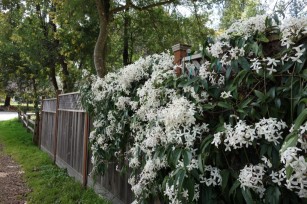 Clematis ( clematis armandii ) Earlier this spring you couldn't miss their fragrance if you were anywhere near a blooming one. Covered with an abundance of highly-scented, star-like flowers in brilliant white clusters, this showy evergreen vine grows fast in partial sun. This vine is perfect as a patio, trellis or arbor cover and makes a great privacy screen. Give this vine support as it grows to 25 feet long and can become quite heavy. If you live among deer, it's a great choice for a fragrant vine.
Clematis ( clematis armandii ) Earlier this spring you couldn't miss their fragrance if you were anywhere near a blooming one. Covered with an abundance of highly-scented, star-like flowers in brilliant white clusters, this showy evergreen vine grows fast in partial sun. This vine is perfect as a patio, trellis or arbor cover and makes a great privacy screen. Give this vine support as it grows to 25 feet long and can become quite heavy. If you live among deer, it's a great choice for a fragrant vine.
Fragrant climbing roses trained on an arbor or fence are classic landscape design choices. One of my favorites for gardens I design is Climbing Iceberg because they are disease resistant and have few thorns. It's hard to find a better behaved rose that gives so much in return with no  effort on your part. They start blooming early with a lovely sweet rose fragrance and continue until frost. Two climbers planted on each side of a window make a stunning display. It's one of my favorite white roses of all time and grows in sun or partial shade.
effort on your part. They start blooming early with a lovely sweet rose fragrance and continue until frost. Two climbers planted on each side of a window make a stunning display. It's one of my favorite white roses of all time and grows in sun or partial shade.
If you think violas are only for the winter garden, think again. Viola Etain is a reliable perennial that blooms heavily spring through fall . Soft primrose yellow petals edged in lavender are sweetly scented and bloom easily in sun or bright shade and in containers. If you cut the plants back to 3" tall once in awhile to rejuvenate and top dress with compost they will reward you with 9 months of fragrance and become one of your favorite violas, too.
There are so many fragrant flowers that make great additions to the garden. Freesia, hyacinth and narcissus bulbs are good bets for early fragrance. Then come the nemesia in every color imaginable. Phlox, lilacs, tuberose, star jasmine, stock, citrus blossoms, gardenia, lily-of-the-valley, daphne, carnations– the possibilities are endless. If you have a particular spot you'd like a suggestion for a fragrant plant, email me and I'd be happy to help.
Fragrance in the garden is nature's way of smiling.

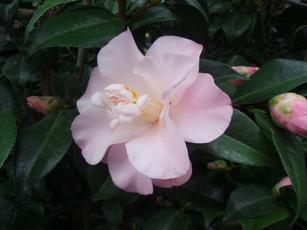
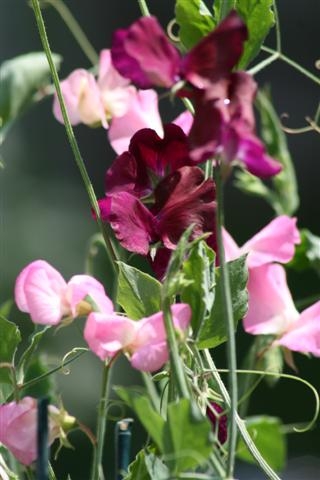 Who doesn’t love old-fashioned sweet peas? A small bouquet will perfume a room with a delicious scent. They remind me of my Aunt Ruth who grew them every year and let me pick a bunch each spring whenever I went to visit. There are many new varieties and colors these days but back then her sweet pea vines were covered with the classic mixed colors of violet, blue, pink, peach and white.
Who doesn’t love old-fashioned sweet peas? A small bouquet will perfume a room with a delicious scent. They remind me of my Aunt Ruth who grew them every year and let me pick a bunch each spring whenever I went to visit. There are many new varieties and colors these days but back then her sweet pea vines were covered with the classic mixed colors of violet, blue, pink, peach and white. 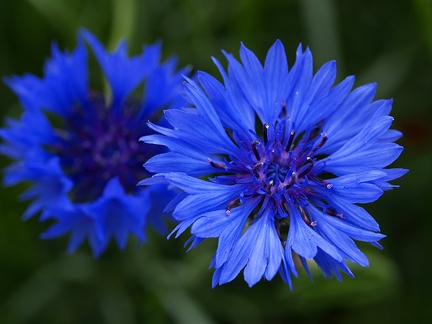 d flower clusters bloom summer to fall on long stems. Grow in full sun to part shade. This beautiful cut flower reaches 30" tall by 15-18" wide. Ageratum Blue Horizon is another great variety.
d flower clusters bloom summer to fall on long stems. Grow in full sun to part shade. This beautiful cut flower reaches 30" tall by 15-18" wide. Ageratum Blue Horizon is another great variety.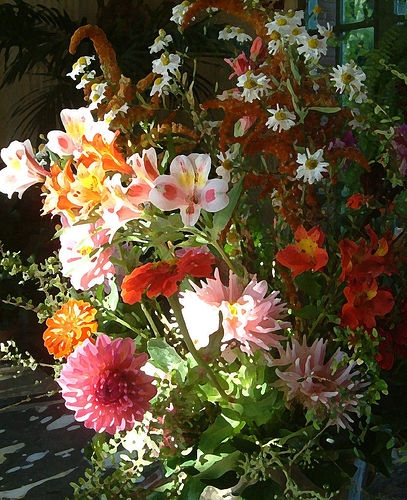 m table, kitchen, bedroom or bath.
m table, kitchen, bedroom or bath.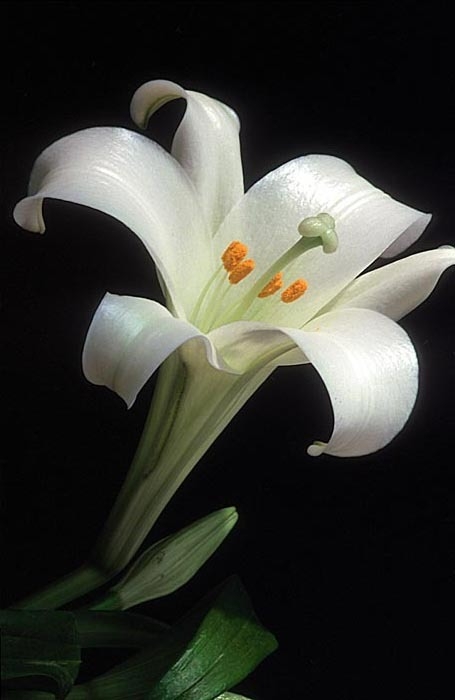 to come up in the garden. The shoots are now about 6" tall but they are a long way from blooming and I’m looking forward to those huge, fragrant, white trumpet-shaped flowers. Still I pick up a few new blooming plants each year to enjoy now and celebrate Easter. It’s a tradition that marks spring along with decorating eggs, chocolate bunnies and Easter baskets.
to come up in the garden. The shoots are now about 6" tall but they are a long way from blooming and I’m looking forward to those huge, fragrant, white trumpet-shaped flowers. Still I pick up a few new blooming plants each year to enjoy now and celebrate Easter. It’s a tradition that marks spring along with decorating eggs, chocolate bunnies and Easter baskets.